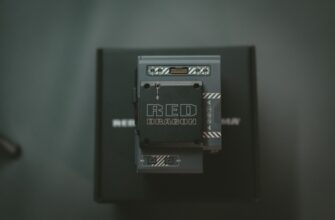- Unlocking Profit Potential: Solana Arbitrage on Bybit
- What is Arbitrage Trading?
- Why Solana (SOL) for High-Frequency Arbitrage?
- Why Bybit for Solana Arbitrage?
- High Volatility: The Arbitrage Catalyst
- Mastering the 15-Minute Timeframe Strategy
- Critical Risk Management Protocols
- Frequently Asked Questions
- How much capital do I need for SOL arbitrage on Bybit?
- Can I automate Solana arbitrage on the 15-minute timeframe?
- What’s the realistic profit potential?
- How do funding rates affect SOL arbitrage on Bybit?
- Is triangular arbitrage possible with SOL on Bybit?
Unlocking Profit Potential: Solana Arbitrage on Bybit
Cryptocurrency arbitrage offers traders opportunities to profit from temporary price discrepancies across exchanges. When combined with Solana’s (SOL) notorious volatility and Bybit’s robust trading infrastructure, the 15-minute timeframe becomes a strategic playground for agile traders. This guide explores how to leverage high volatility arbitrage opportunities for SOL on Bybit within compressed time windows, balancing profit potential with calculated risk management.
What is Arbitrage Trading?
Arbitrage involves simultaneously buying and selling an asset across different markets to exploit price differences. In crypto, this often means:
- Exchange Arbitrage: Capitalizing on SOL price gaps between Bybit and other exchanges
- Funding Rate Arbitrage: Leveraging differences between perpetual contract funding rates and spot prices
- Statistical Arbitrage: Using algorithmic models to identify temporary mispricings
Why Solana (SOL) for High-Frequency Arbitrage?
Solana’s unique characteristics make it ideal for rapid arbitrage strategies:
- Ultra-fast block times (~400ms) enable near-instant transactions
- High volatility frequently creates 3-5% intraday price swings
- Significant trading volume across exchanges reduces slippage risk
- Growing DeFi ecosystem creates cross-platform pricing inefficiencies
Why Bybit for Solana Arbitrage?
Bybit’s infrastructure provides distinct advantages for SOL arbitrageurs:
- Deep SOL/USDT liquidity with tight spreads
- Advanced order types (conditional, OCO) for precise execution
- 0.1% spot trading fees (lower for VIP users)
- API connectivity for algorithmic trading strategies
- Real-time market data with minimal latency
High Volatility: The Arbitrage Catalyst
Volatility isn’t just risk – it’s the engine of arbitrage opportunity. During high-volatility events:
- SOL price discrepancies between exchanges widen significantly
- 15-minute candles frequently show 2-3% price variations
- Liquidity imbalances create temporary mispricings
- Market overreactions generate mean-reversion opportunities
Mastering the 15-Minute Timeframe Strategy
This condensed timeframe requires precision execution:
- Setup Monitoring Tools: Use TradingView with SOL/USDT pairs across 3+ exchanges
- Identify Thresholds: Trigger trades only when price gaps exceed 1.5% after fees
- Execution Protocol:
- Buy SOL on exchange with lower price (e.g., Binance)
- Simultaneously sell SOL perpetual contract on Bybit
- Use Bybit’s OCO orders for automatic profit-taking/stop-loss
- Position Sizing: Never risk >2% of capital per trade
- Exit Strategy: Close positions within 10 minutes regardless of outcome
Critical Risk Management Protocols
Mitigate inherent arbitrage risks with:
- Slippage Control: Use limit orders and avoid market orders during news events
- Withdrawal Timing: Account for blockchain confirmation times when transferring SOL
- Exchange Risk: Diversify across multiple trusted platforms
- API Fail-Safes: Implement redundant connectivity solutions
- Volatility Caps: Avoid trading during extreme events (>10% swings)
Frequently Asked Questions
How much capital do I need for SOL arbitrage on Bybit?
Minimum $2,000 is recommended to overcome fees and slippage. Profitable strategies typically require $5,000+ to generate meaningful returns after accounting for transaction costs.
Can I automate Solana arbitrage on the 15-minute timeframe?
Yes, using Bybit’s API with Python or specialized arbitrage bots. However, manual oversight is crucial during high volatility to prevent execution failures. Test algorithms extensively in sandbox environments first.
What’s the realistic profit potential?
Skilled traders target 0.5-1.5% daily returns during volatile periods. This translates to 15-45% monthly compounding – but requires perfect execution and favorable market conditions. Most traders achieve 5-15% monthly.
How do funding rates affect SOL arbitrage on Bybit?
Positive funding rates incentivize arbitrageurs to short perpetual contracts while holding spot SOL. Monitor Bybit’s funding rate history – rates above 0.01% per 8 hours create optimal conditions for this strategy.
Is triangular arbitrage possible with SOL on Bybit?
Yes, through SOL/USDT, BTC/USDT and SOL/BTC pairs. However, 15-minute windows require sophisticated bots due to complex calculations. For manual traders, simple exchange arbitrage is more feasible.
Successful Solana arbitrage on Bybit demands discipline, real-time analytics, and strict risk parameters. By focusing on high volatility within compressed timeframes, traders can transform market inefficiencies into consistent profits while navigating Solana’s dynamic ecosystem.








